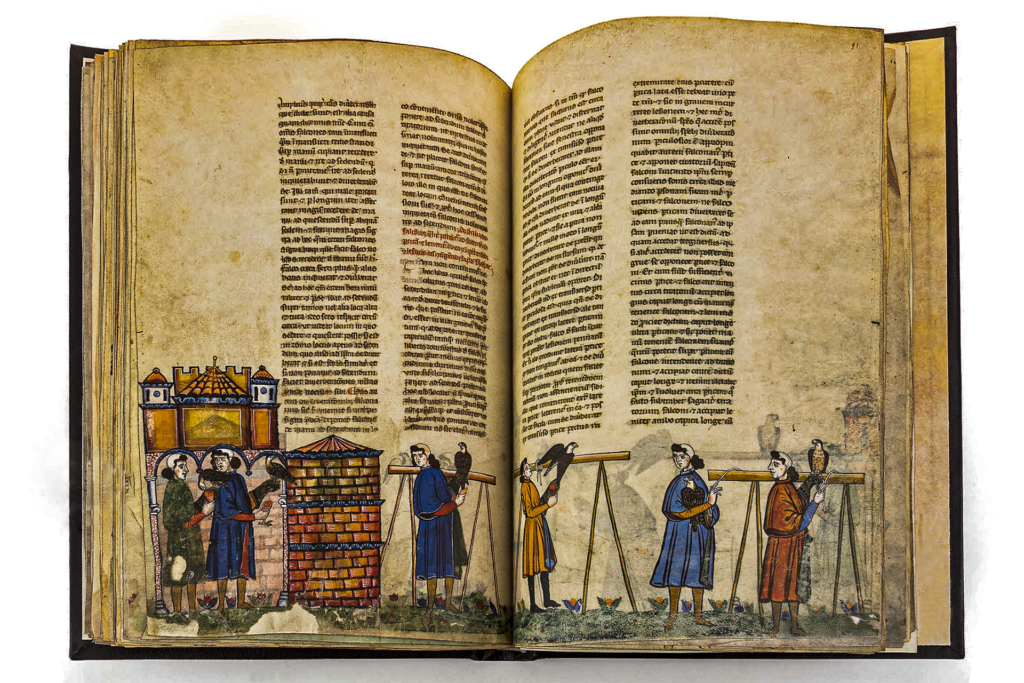Domus, castrum or palatium, buildings dedicated to leisure and hunting, located in parks, gardens and scenic spots, were called loca solatiorum. These buildings were located far from the urban centre, in areas of lush greenery, enriched by the presence of springs, fishponds, artificial lakes, gardens and water features. The Arab community, in fact, experts in various disciplines including hydraulic sciences, introduced a new system of underground water channelling to Sicily, the so-called
quanāt
, as well as irrigation systems, collection tanks,
saie
and surface pipelines.
Hunting was often practised within the parks, especially with the falcon which, in the Middle Ages, became the courtly ideal par excellence, an intellectual endeavour and a symbol of social status, as the falcon began to represent the warrior victorious in combat.
The Norman dynasty is inherited by
Frederick II of Swabia
, son of Constance of Hauteville and Henry IV. The stupor mundi, Emperor of the Holy Roman Empire and King of Sicily, as well as inheriting numerous residences from his predecessors such as the Zisa, Favara and Cuba, wrote a treatise on the art of falconry, De arte Venandi Cum Avibus, transcribed by his son Manfredi and preserved in the Vatican Library.
